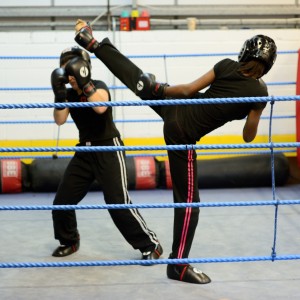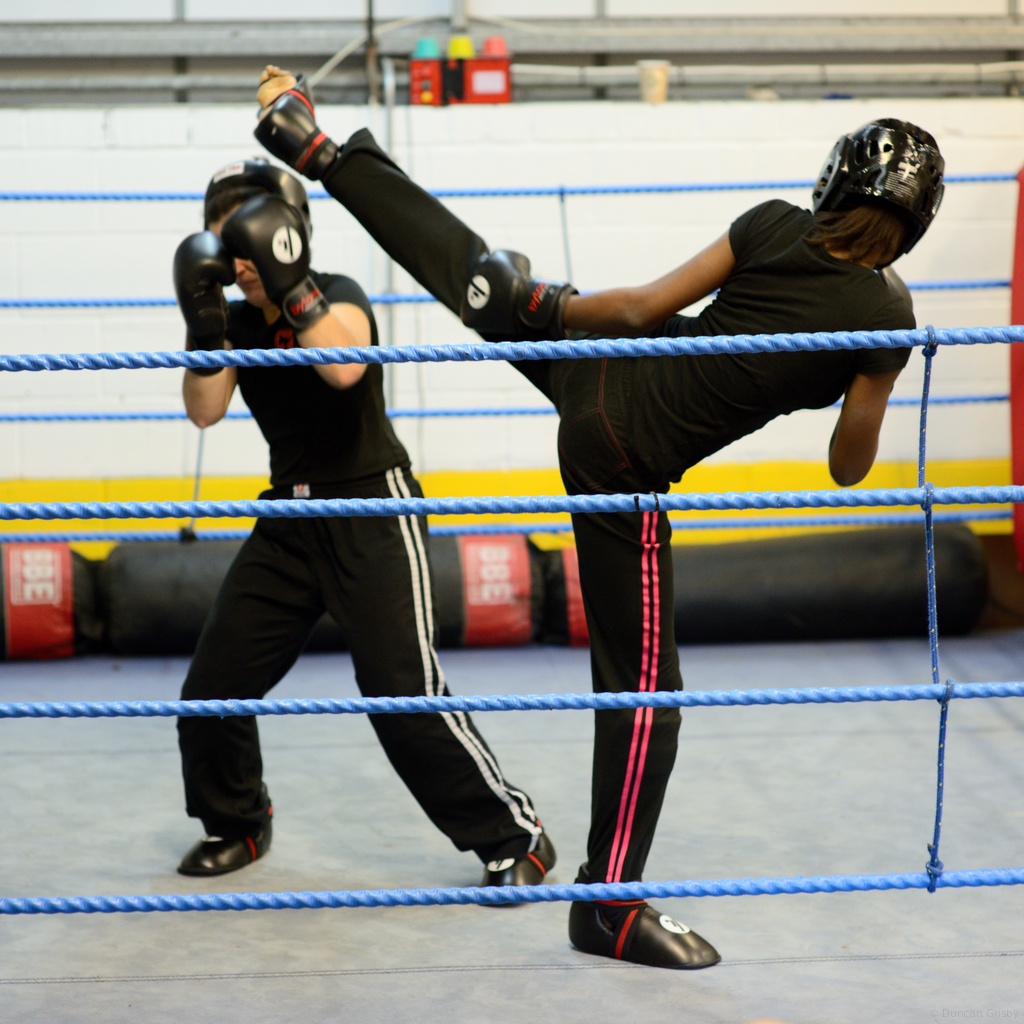
I got inspired about writing this post by reading the 4 Hour Chef by Timothy Ferris. In what it looks like a cookery book Tim packs tons of amazing methodologies about how to learn a huge range of different skills. This post is about using the key components that help delivering a great strike as if they were ingredients for a recipe. When cooking it is possible to deliver different kinds of food by varying amounts of the same ingredients; by the same token we can deliver strikes that have different effect on their target by adjusting the dosage of each individual component or ingredient. I am exploring in this post how that can affect and improve your striking skills.
When I teach total beginners from scratch I first focus on the basic movements and soon after trying to explain how each ingredient should be used. Around a third of my students have previous experience from other clubs and unfortunately, in many cases, they were not taught things the right way. I find that many people understand or even master well one or two of these ingredients but often cannot blend and vary all of them at once. The right combination of the four ingredients makes a strike, being a punch or a kick, very effective.
The same principles I am about to describe apply, albeit in slightly different contexts, when you are sparring in your club, fighting in a competitive bout or in a self defence situation. The expected outcome will determine the combination, essentially the recipe, about how to blend these four ingredients in a way that will make your strikes remarkably effective.
Here are the ingredients:
- Speed
- Power
- Frequency or Pace
- Accuracy
Let’s explore each ingredient, together with a few training tips that can help improving them individually and then how to combine them effectively.
Speed
Using an approximate definition (sorry for the physicists that read this) by speed we define how fast your strike can travel from its resting position, e.g. your guard, all the way to its target and back. By travelling fast the strike will offer the following physical advantages:
- It will build up more momentum, increasing the damaging power that will hit the target
- It will give less time to the opponent to block or avoid the attack, increasing your score rate
- It will keep you off guard for shorter time so offering less opportunities for counter attack, decreasing your opponent’s score rate
There are other advantages, sometimes less tangible and more depending on your opponent: if every time you hit the opponent he/she is struggling to cope with your strike or getting overwhelmed you are in a very advantageous position.
Speed is very much function of your muscle structure; some people can naturally tense their muscles in the appropriate way to deliver fast and smooth movements while others less so. If you would like to improve the speed of a particular strike here are some tips that you should however check with your coach before applying. If you would like to improve speed on more than one technique please apply these tips to all of the techniques:
- Repeat the same strike several times, trying to increase speed, even so slightly, every time; a simple way of doing this is consciously relax all muscles involved before the strike and then try to tense them in the right order, in to maximise execution speed
- Alternate very slow techniques with very fast ones; the slow ones should be delivered while tensing all muscles in the arm or leg used to strike while the fast ones should be following the principles explained at the previous point
- Deliver the technique in bursts of two, three or more strikes aiming at delivering equally powerful and fast techniques throughout the sequence
- Ensure that each strike ends at the same point where it started, e.g. back in guard or where the next strike will start from; this will help you with frequency as described later
- Use resistance, either an elastic band that goes against the movement or holding / attaching weights to the limb that you are working out.
Power
Again I will apologise to physicists about my crude definition of power: power in a strike is about delivering damage. A strike is powerful when you can shake an opponent with a kick, push him/her in the same direction of the strike and so on. When the opponent’s body hurts he/she is less likely to hit us back. Several powerful strikes are likely to deliver the damage that a single one cannot deliver.
Power is both function of your speed and you body mass, however in different proportions. A powerful strike should be hitting the surface of the target and shake it inside; powerful strikes are not about pushing opponents off their position but leave them where they are, in pain. In order to maximise power we must be hitting with the whole body, aligning forces in the same direction rather than just using the striking arm or leg.
Here are some suggestions about training for power:
- Work at the bag or on pads and concentrate purely on power; many of the suggestions above about speed can be applied to power training
- Try some isometric exercises by touching your target first and then try to push it as you were delivering the strike from there
- Repeat the same strike twice or more times and ensure that each strike has the same power
Frequency or pace
By frequency and pace I mean how often you strike and how many times. Speed is directly related to frequency. If your speed is high you will be able to hit more times in a certain period of time, increasing frequency. That will keep the opponent busy and he/she will have less time to defend or counter attack.
Frequency makes sense to be practiced on multiple strikes so start working at combinations. All of the suggestions mentioned above can be used to improve and workout frequency. Work first at combinations of the same or very similar techniques then start varying them. If your style is about punching and kicking then try optimising frequency on mixed combinations of punches and kicks.
Accuracy
Accuracy is about delivering strikes to the right spot, at the right time, maximising the amount of damage delivered and saving energy. The same strike, delivered with the same power and at the same speed to a neutral spot, say a shoulder, might just waste the time and energy used for it. On the other hand if accurately delivered to the right spot, e.g. the jaw, the temple, solar plexus or the liver, it might knock somebody out. Accuracy is not just about striking precisely within a 3D space but it is also involving time; the right spot might be available to be hit just at a certain point and just accurate timing allows you to hit the right target at the right time.
Accuracy is easier said than done, particularly while fighting a non cooperating opponent that is trying his/her best to avoid being hit and fighting back at the same time.
Here are some suggestions about training for accuracy:
- Start by hitting static targets and ensure that the strike hits as accurately as possible the spot you are aiming at. You should always aim at small targets, e.g. a coin size, rather than a large one such as a dinner plate
- Work on individual strikes first, then repetitions of the same strike then combinations of different strikes
- Work on moving targets; a partner or coach with focus mitts will help you to improve and focus on accuracy on both 3D space and timing
A few consideration about how to best blend the 4 ingredients
In an ideal world you would like to deliver super fact, accurate and powerful kicks and punches in bursts of 3-5 strikes and overwhelm your opponent. The underline limitation is obviously the amount of total stamina or energy available, very much a function of your fitness level. Powerful punches use more energy than soft ones; powerful kicks use about 3 times the energy of each punch.
Here below a few facts about combining the four key ingredients in different martial arts and styles:
- Boxers tend to apply good combinations of speed, power, accuracy and frequency
- Free style Karate and Semi contact kickboxing fighters tend to use speed and accuracy to score points; often their strikes are not too powerful and the very nature of their styles keeps frequency to a minimum because they aim to score with one key technique and the fight gets stopped by the referee
- Full contact Karate tend to concentrate on the single killer strike, therefore speed and power are good, often matched with good accuracy, but frequency is just not there for the same reason as semi contact fighters
- Thai boxers train for power and speed, some time frequency; in my experience their accuracy could be often improved and they try to overcome the lack of it by hitting harder
- Light contact kickboxers have to balance speed, accuracy and frequency but they must be controlled on the power they deliver simply because excessive power could be penalised
- Full contact kickboxers should be delivering a good combination of high power, speed, accuracy and frequency and some of them do
- Prectitioners of Wing Chun tend to hit at a very high frequency and often with accuracy but power is some times neglegted.
Conclusions
Regardless the martial art you are training you should always consider these four ingredients as the basic components to deliver effective strikes. It is very important to understand and master the right combination of these components so that you can deliver the strikes you really want to.


Thanks for a very interesting article, Massimo. One thought occurred to me: could ‘surprise’ be considered as a fifth ingredient of an effective strike? Sometimes even fast, powerful, accurate and frequent strikes can be countered if the attacker is following a predictable combination, whereas an unexpected technique may score even if some of the above qualities are lacking.
Hi Scott, thanks for the valuable comment; I agree with you although my post is more about the physical effectiveness of strikes rather than their scorability. Surprise, like moving in a broken rythm and so on, surely help scoring and I might discuss that in another post.
Like a good recipe, you need to have all the right ingredients in order to get the best result. Great article.